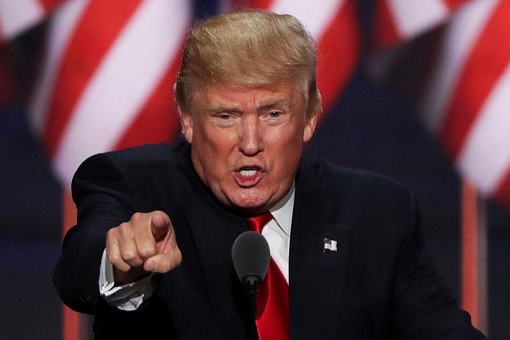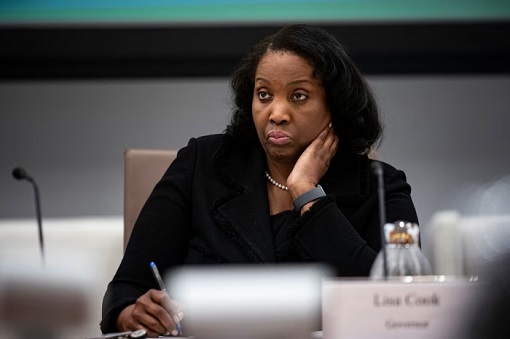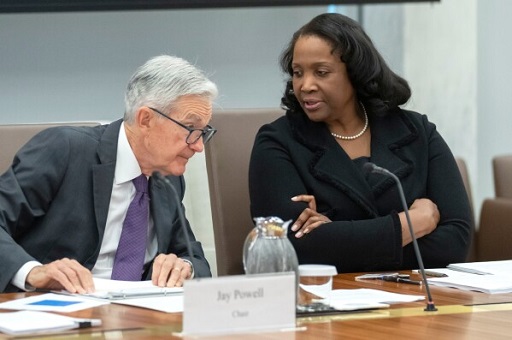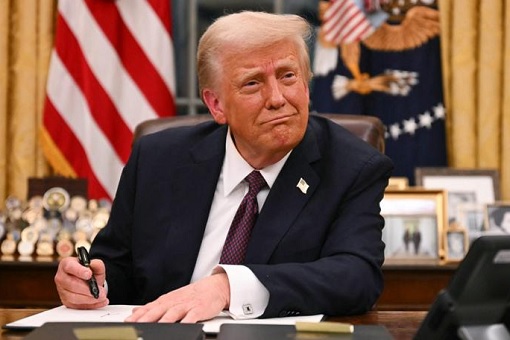
You’re Fired!!! – U.S. Federal Reserve Independence At Risk As Trump Tests Power By Sacking Lisa Cook
August 28th, 2025 by financetwitter
Xi Jinping, Vladimir Putin and Kim Jung-Un were some of the authoritarian leaders Donald Trump admires. And there’s a reason why the U.S. president has shown greater respect for them than fellow democratic leaders from Western nations – the absolute power. Even though Trump says he’s not a dictator, he has hinted that dictatorships might not be so bad.
On Monday (August 25) President Donald Trump said he thinks Americans may like a “dictator,” though he wouldn’t describe himself as one. While he rejects the label of being a dictator, clearly he likes the power that comes with dictatorship. Already, he has been accused by critics of acting like a dictator, especially his crackdowns on freedom and democracy.
When the Federal Reserve Chairman Jerome Powell repeatedly refused to lower interest rates as demanded, President Trump mocked, insulted, ridiculed and even threatened to fire him over the policy disagreement. And when the U.S. economy showed a lower-than-expected jobs, Trump sacked Statistics Chief Erika McEntarfer for “cooking the books”.

The only reason Powell hasn’t been fired yet was because there was a disagreement within Trump administration in the matter – the fear of economic consequences. For example, Treasury Secretary Scott Bessent said firing Powell was unnecessary because the economy is doing well and markets have responded positively to the president’s policies.
But Trump was not happy that the Federal Reserve appeared to be more powerful than him. By hook or by crook, he wants to shake up the entire Fed board and replace it with people who share his political agenda – cuts interest rate to give the U.S. economy a boost and make it cheaper for the government (and businessmen like him) to borrow. He saw an opportunity to flex his muscle on Monday.
The president finally made his move and fired a top Federal Reserve official, Governor Lisa Cook, citing allegations of mortgage fraud – falsifying records to obtain favorable terms on a mortgage. Before Mr Trump fired her, Ms Cook had issued a brief statement saying she had “no intention of being bullied to step down from my position because of some questions raised in a tweet.”

Cook is one of seven members of the Fed’s board of governors, a position empowering her to sit on the 12-member committee which is responsible for setting interest rates in the US. She was appointed by Trump’s predecessor, Democrat Joe Biden, in 2022 and is the first African American woman to serve in the role. Now, she plans to sue Trump to challenge her removal.
The POTUS is testing the water with market reactions, as well as testing his power to fire a Federal Reserve governor. No American president has ever fired a Fed governor in the central bank’s 111-year history. But it’s also true that no U.S. president has ever tried to push the limits – till now. If Trump’s effort to remove Lisa Cook succeeds, it would spark serious questions about the independence of America’s central bank.
Not only could it mark the end of the Federal Reserve’s independence from White House control, which it effectively obtained in 1951, but it could also result in higher inflation due to lower borrowing costs. For now, the stock market might seem indifferent over the crisis, partly because the Fed was already preparing to cut rates, and largely because Trump’s decision could be reversed in the Supreme Court.

On Friday (August 23), Jerome Powell indicated that tariffs were unlikely to lead to sustained inflation given a weak labour market, opening the door to a rate cut in September. However, long-term US government bonds were sold off on Tuesday (August 26), suggesting that investors are concerned about the Federal Reserve’s independence and Trump’s reckless attacks on the institution.
If investors start to doubt the Fed’s credibility, borrowing costs for the US government could rise – and that would have knock-on effects around the world since they are used to set the price of assets. But Trump has a tendency to make spectacular U-turns, so if the financial markets reacted negatively, he would shamelessly – as proven many times – reverse it by cooking some excuses, or blaming someone else.
Regardless of whether Trump has any authority to fire Cook, the U.S. president’s strategy with the Fed, as with tariffs, is like boiling a frog – moving gradually enough to trick markets into thinking nothing of macroeconomic significance has happened. When he announced steep tariffs in early April, markets revolted, so he walked them back. Then, piece by piece, he restored most of them.

Similarly, when he toyed with firing Powell, markets went kaput. So instead of trying to remove Powell, Trump has looked for a way to accomplish the same thing. If he replaces Cook, he will have appointed four of the Fed’s seven governors. “We’ll have a majority very shortly. Once we have a majority, housing is gonna swing and it’s gonna be great,” – Trump said on Tuesday.
Trump-appointed governors wouldn’t necessarily control the Fed’s decisions immediately, because five of the 12 members of the rate-setting Federal Open Market Committee are presidents of the reserve banks. But the board has authority over those presidents, and could force any or all of them out of office by early next year. It was a clever tactical move to create fear, if not chaos.
In theory, Fed governors are free to vote on interest rates as they wish. But by seeking to fire Cook, whose 15-year term is due to expire in 2038 and has served since 2022, Trump has signaled that he could do the same for any sitting governor who doesn’t vote as he prefers on interest rates. Removing bank presidents would be an unprecedented violation of norms. But Trump has demonstrated repeatedly he is willing to violate norms.

Unlike his first term, where many of his political appointees had turned out to be traitors or openly disobeyed his orders, this round he wants to ensure that his appointees are loyal. Even if Trump loses in his experiment to replace Lisa Cook (who voted to maintain U.S. interest rates ) with a loyalist, he may well try again, and his next bully target might choose to change his vote or quit rather than fight.
Trump’s interference has already politicized the Fed. Trump’s Fed candidates have said they think rates should go down even though inflation, at around 3%, is still above the Fed’s 2% target. Last September, while Joe Biden was still president, Stephen Miran, then an investment fund strategist, said it was a mistake for the Fed to cut rates with underlying inflation between 2.5% and 3%.
Now chairman of Trump’s Council of Economic Advisers and a candidate for a spot on the Fed, the same man who disagreed with Trump has echoed Trump’s criticism that the Fed has been slow to lower rates. As Trump’s Fed nominee, Stephen Miran made an incredible U-turn and argues Trump’s policies will deliver lower inflation. But he isn’t the only one trying to get on Trump’s good book.

Last week, David Malpass, a former president of the World Bank who is also under consideration for a spot, wrote that the Fed should cut interest rates and anchor itself “in forward-looking, market-based data with a goal of defending the dollar”, even though the dollar has fallen steadily this year. Just like Trump’s TV show “The Apprentice”, candidates were fighting to get his attention for a job.
But why should the world care whether the Fed remains independent or not? That’s because global investors rely on the Fed and US Treasury bonds as a financial safe haven. The fed funds rate is the target interest rate that banks charge each other for overnight loans to meet their reserve requirements, and helps set the cost of home mortgages, car loans and credit card debt.
A 12-person group within the Fed called the Federal Open Market Committee, or FOMC, sets the key overnight borrowing rate, currently set at 4.25% to 4.50%. Letting politics like Trump drive monetary policy can be risky as cutting interest rates to artificially let it low just to satisfy a politician can lead to rising inflation, market instability, and eventually global financial crisis.

In 1970, President Richard Nixon tapped Arthur Burns, one of his top economic aides, to lead the Fed. Nixon demanded and pressured Burns to cut rates in an expansionary monetary policy in the run-up to the 1972 election. By the late 1970s, prices were out of control. Inflation eventually spiked beyond 13% in 1980 and unemployment surged in what later became known as the Great Stagflation.
Dumbo Fuck dictator wannabe.
ReplyDeletea product of the system u so admire!
Delete